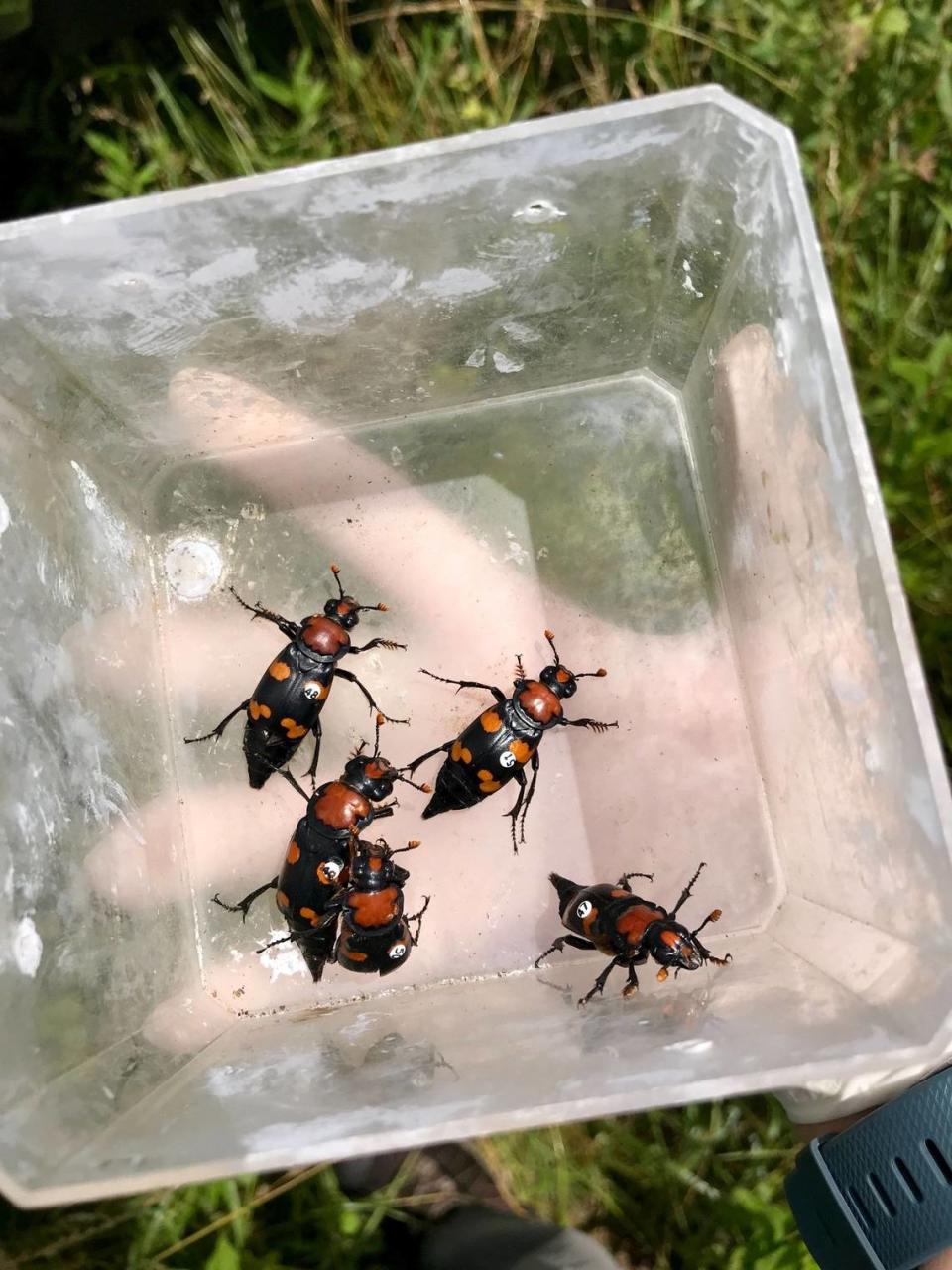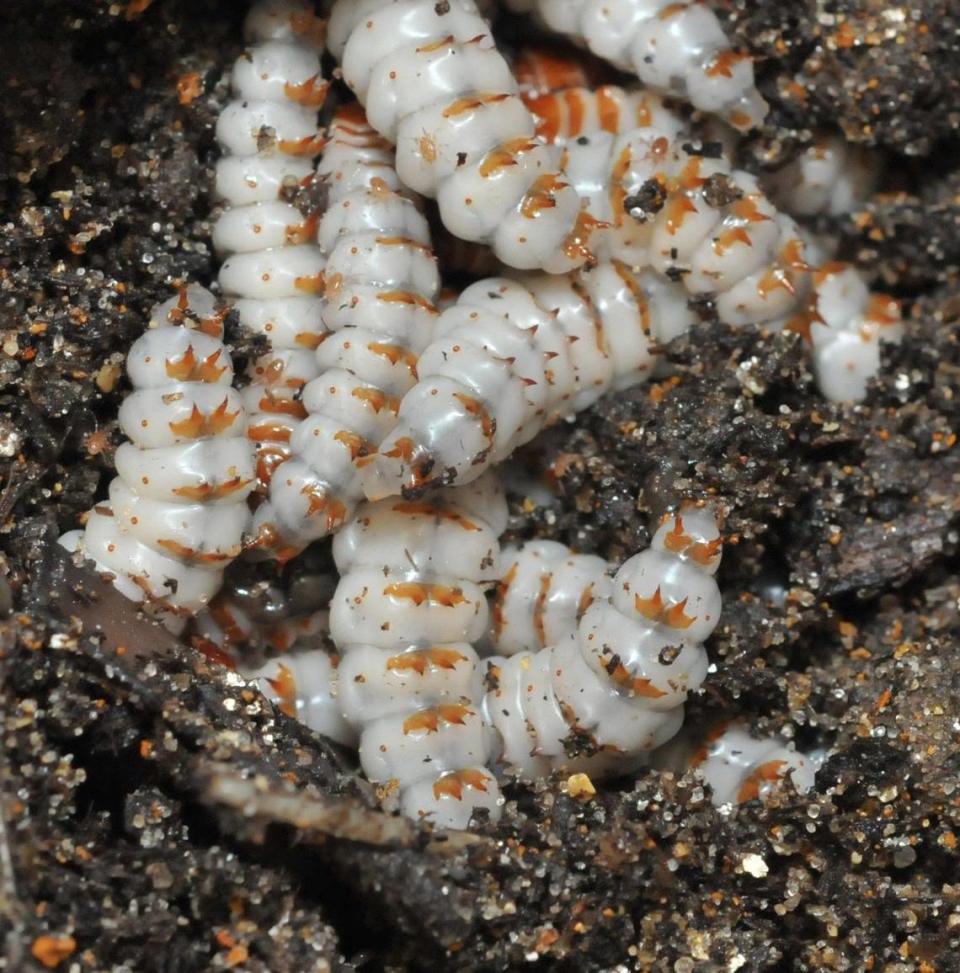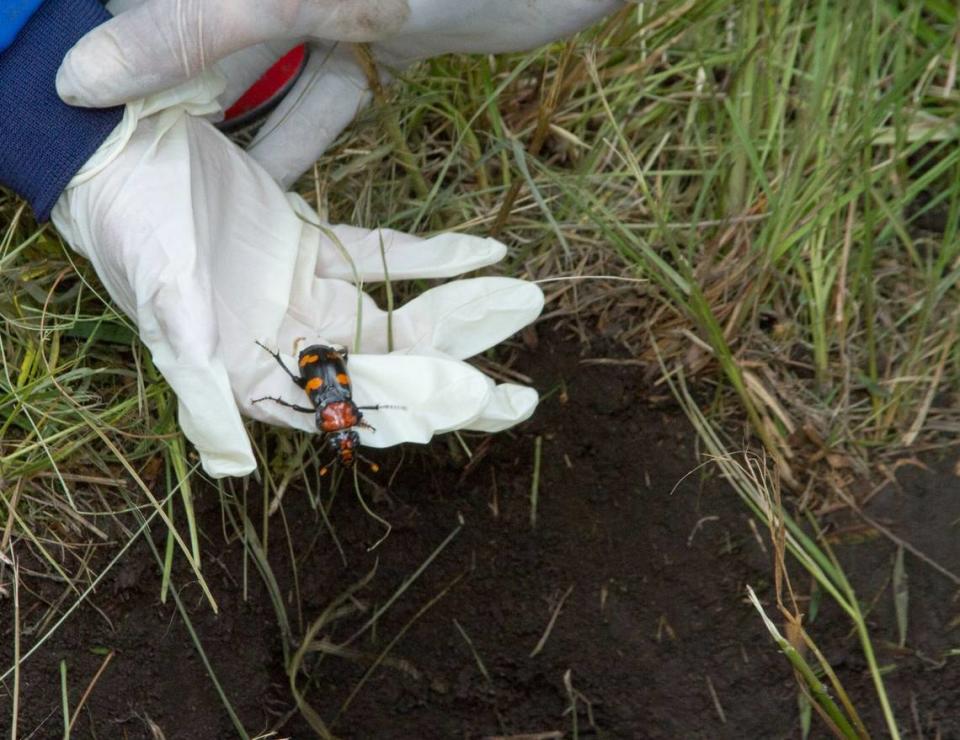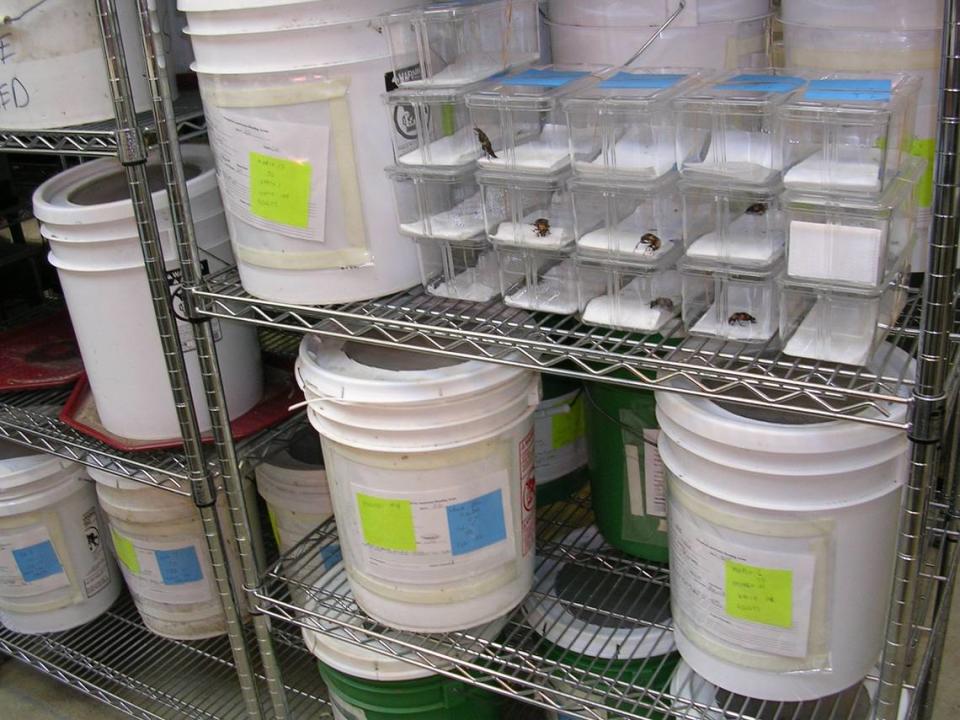The Saint Louis Zoo is working to reintroduce this ‘necessary’ endangered species
The American burying beetle is no longer found in Illinois, but researchers with the Saint Louis Zoo are working to bring the environmentally significant species back to Missouri and surrounding states.
The beetle species, which the International Union for the Conservation of Nature classifies as “critically endangered,” plays an important role in controlling fly populations, as well as recycling nutrients back into the environment.
American burying beetles are a “necessary part of our ecosystem,” according to the Saint Louis Zoo.
Habitat loss and climate change have hurt American burying beetle populations, according to the U.S. Fish and Wildlife Service. And although the species is native to 35 states, they’re no longer found in many of their former habitats.

Bob Merz, assistant director of the Saint Louis Zoo WildCare Institute and co-director of the Center for American Burying Beetle Conservation with the Saint Louis Zoo WildCare Institute, told the News-Democrat the American burying beetle only naturally exists in a few states now.
“They’re existing in small populations across the U.S. that are somewhat isolated from one another,” Merz said.
Kansas, Oklahoma, South Dakota and an island off the coast of Rhode Island are some of the only places in the country where populations of the beetles still exist without human support, Merz continued.
The species’ official conservation status varies by location and organization — it’s considered endangered in Missouri and threatened federally, but overall, Merz said “they’re not doing well.”
Here’s what to know about the American burying beetle, why it’s important to the St. Louis area and local efforts to save the species from extinction.
What is the American burying beetle?
The American burying beetle grows to 1 to 1.8 inches long, according to the USFWS, making it the largest of the carrion beetles. The species feeds on dead animals and is nocturnal.
While some insects leave their young to fend for themselves, the American burying beetle exhibits “very advanced levels of parental care,” Kayla Garcia, zoological manager of invertebrates at the Saint Louis Zoo and co-director of the Center for American Burying Beetle Conservation with the Saint Louis Zoo WildCare Institute, told the News-Democrat.
Both the female and male American burying beetles take care of their babies and work to raise them on carrion such as a dead quail or small rodent, Garcia continued.

Their carrion diet benefits the environment by removing a food source for flies and recycling the carcass’ nutrients.
“In their role as decomposers, they are kind of essential nutrient recyclers. So they’re returning these dead animals back to the soil, breaking down those bodies. In the process of their reproduction they actually will bury them underneath the surface, hence their name, and they work to return those nutrients back to the environment,” Garcia said.
The beetles spend most of their lives underground, and their average lifespan is about one year.
Research based in Nebraska from 2004 showed the American burying beetle could move up to 18 miles in a single night, the USFWS reports.
What is the Saint Louis Zoo doing to conserve the species?
Researchers with the Saint Louis Zoo are working to reintroduce the American burying beetle to six sites in southwest Missouri as part of a long-term project.

Merz said his work with the species in Missouri began in 2001, and the researchers likely won’t know for several more years whether the reintroduction program will successfully establish independent populations.
Saint Louis Zoo staff have successfully bred “thousands” of American burying beetles, according to the zoo’s website, and they started reintroducing them into Missouri nature in 2012.
This year, zoo researchers will reintroduce between 70 to 80 pairs of beetles by taking them to the sites and giving them a food source. Missouri’s American burying beetles are considered a ”nonessential experimental population,” and the researchers’ goal is to establish a self-sustaining population.
This summer’s reintroduction process began Tuesday, and Saint Louis Zoo researchers will do reintroductions again June 20.

Visitors to the Saint Louis Zoo may get a glimpse of the American burying beetle in the Bayer Insectarium if they happen to stop by when staff are cleaning or feeding the beetles. The zoo’s American burying beetles spend most of their time in enclosures inside a temperature-controlled room in the insectarium.

